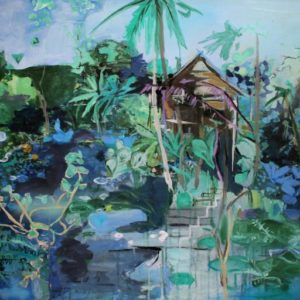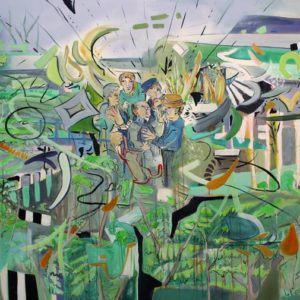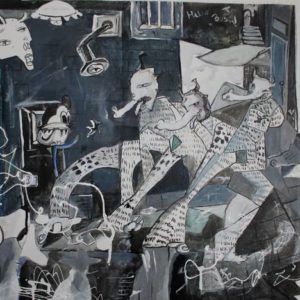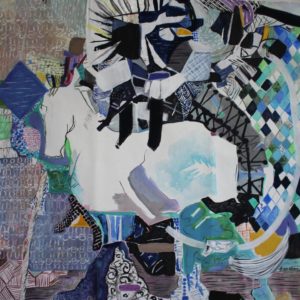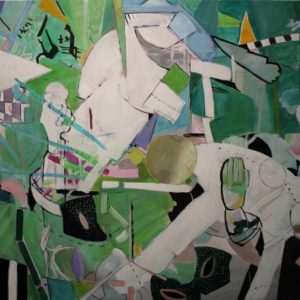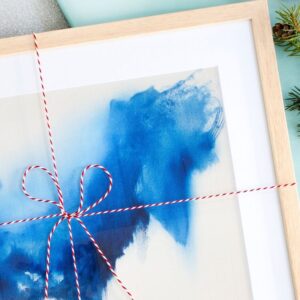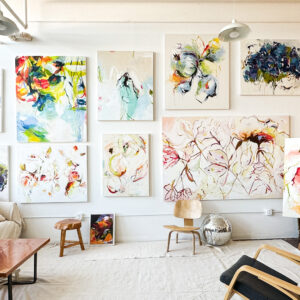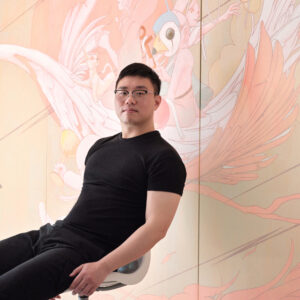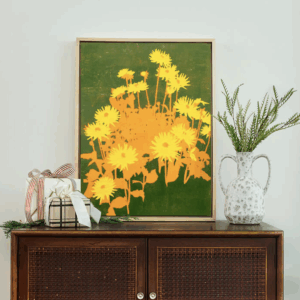Inside the Studio
 Cultivate and Crafted Works of Edina Gulyás
Cultivate and Crafted Works of Edina Gulyás
What are the major themes you pursue in your work?
The combination of my past, as well as my original studies of Horticultural Engineering, are always reflected in my paintings. My studio is a huge haven in a very nice green area. It’s near the sea, surrounded by many plants and birds on Sardinia. About four years ago I decided to transform the space, creating a 2,500 ft small private garden where the beauty of nature and art could meet. Parallel to my painting practice, I work on the landscape every day, pruning and planting. I often paint gardens, and through my practice I admire nature’s beauty, or I paint a garden where I imagine a story.
How did you first get interested in your medium, and what draws you to it specifically?
I use oil and acrylic paints. I prefer strong, living colors in my paintings. I think after acrylic has dried, it is no longer so brights, so I use oil to compensate for this. I prefer to prepare collage paintings too; this medium is very helpful to create abstract scenes, and the painting becomes more rustic.
How has your style and practice changed over the years?
A few years ago for a short period I painted realistic figurative paintings, but I grew tired of this and I began instead to paint expressive self portraits, cityscapes, and landscapes. Today I try to use the combination of these studies in order to create my semi-abstract style.
Can you walk us through your process? Do you begin with a sketch, or do you just jump in? How long do you spend on one work? How do you know when it is finished?
I spend a lot of time on the preparation and something less time to get it ready. It is easier to begin if actually something has happened. I know I will need a base such as a garden or a house and a scene with the animal or with neighbors. If I have no theme, I spend days looking for some inspiration. Mostly I use one of my previous paintings and I prepare some hand-painted sketches, and I take photos and use Photoshop to cut details or change colors. I change colors, and adjust my sketches, and then I begin to apply it on the canvas. Sometimes I work quite quickly and spontaneously, and the work comes out exactly as I imagined it to be; other times i need to go in and make changes before the work is complete.
As for how I know when a work is finished? That is difficult to answer. Sometimes when the painting is near me for a long time then I will go back in and change something. I suppose I could say that the painting is finished after I sell it!
If you couldn’t be an artist, what would you do?
I haven’t always been an artist. I studied Horticultural Engineering and Phytosanitary at the University in Budapest, and pursued a successful career as a plant buyer for nearly 10 years. Although I had always dreamed of becoming a painter, it wasn’t until I met my husband and moved to Italy that I began painting. If I couldn’t be an artist, then I would be a horticultural engineer.
Who are some of your favorite artists, and why?
I am drawn to the works of some artists such as Tomoko Nagai, Makiko Kudo, Jean Dubbuffet, Lin de Busk, Magnus Plessen, and Tal R. I love their creativity, and their works are very influential on my practice.









